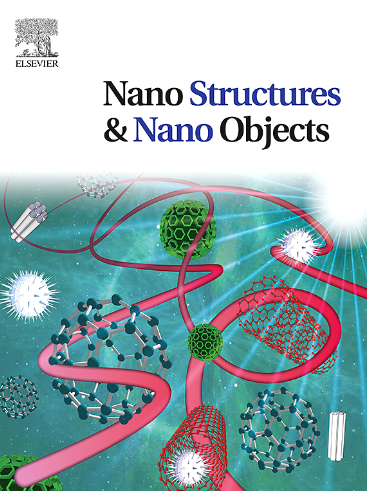Performance optimization of hybrid nano-engineered geopolymer binders-based ultra-high-performance concrete
IF 5.45
Q1 Physics and Astronomy
引用次数: 0
Abstract
Ultra-high-performance and sustainable construction materials have given the thrust to the development of geopolymer technology. This work presents a nano-engineered geopolymer binder incorporating hybrid nano-reinforcements of nano-silica and graphene oxide at optimized ultrasonication and mechanical milling for improved dispersion and prevention of agglomeration. The resulting specimen exhibits a compressive strength exceeding 120 MPa at 24 h and a water absorption below 3 %. A microwave-assisted novel curing method accelerates geopolymerization, achieving this strength in less than 1 h and a reduction of the curing duration by 70 %. Further employing doped CNTs for structural health sensing has even greater potential, creating a self-sensing system with a gauge factor of over 25. Synchrotron XRD analysis supplies information about phase evolution, thus ensuring a crystallinity index greater than 50 %. Molecular dynamics simulations predict robust interactions with bond energies beyond 320 KJ/mol, whereas kinetic modeling optimizes reaction rates of up to 80 % polymerization within 8 h. Ballistic Impact testing shows over 50 percent enhancement in impact resistance, proving to be very robust under a severe loading condition. The overall picture created by inter alia superior mechanical properties, durability, self-sensing ability, and environmental benefits (20 % energy saving) should be considered as a paradigm shift for constructions with high performance and sustainability, stretching its applications to aerospace and defenses.
混杂纳米工程地聚合物粘结剂基高性能混凝土的性能优化
高性能和可持续的建筑材料推动了地聚合物技术的发展。本研究提出了一种纳米工程地聚合物粘合剂,结合纳米二氧化硅和氧化石墨烯的混合纳米增强剂,通过优化超声和机械研磨来改善分散和防止团聚。试样在24 h时抗压强度超过120 MPa,吸水率低于3% %。一种微波辅助的新型固化方法加速了地聚合,在不到1 h的时间内实现了这种强度,并将固化时间缩短了70% %。进一步采用掺杂碳纳米管进行结构健康感测具有更大的潜力,可以创建一个测量因子超过25的自感系统。同步加速器XRD分析提供了有关相演化的信息,从而确保结晶度指数大于50 %。分子动力学模拟预测了键能超过320 KJ/mol的强大相互作用,而动力学模型优化了反应速率,在8 h内达到80% %的聚合。弹道冲击试验表明,抗冲击性提高50%以上,证明在严峻的载荷条件下非常坚固。卓越的机械性能、耐用性、自我感知能力和环境效益(节能20% %)所创造的整体形象应被视为高性能和可持续性建筑的典范转变,并将其应用于航空航天和国防。
本文章由计算机程序翻译,如有差异,请以英文原文为准。
求助全文
约1分钟内获得全文
求助全文
来源期刊

Nano-Structures & Nano-Objects
Physics and Astronomy-Condensed Matter Physics
CiteScore
9.20
自引率
0.00%
发文量
60
审稿时长
22 days
期刊介绍:
Nano-Structures & Nano-Objects is a new journal devoted to all aspects of the synthesis and the properties of this new flourishing domain. The journal is devoted to novel architectures at the nano-level with an emphasis on new synthesis and characterization methods. The journal is focused on the objects rather than on their applications. However, the research for new applications of original nano-structures & nano-objects in various fields such as nano-electronics, energy conversion, catalysis, drug delivery and nano-medicine is also welcome. The scope of Nano-Structures & Nano-Objects involves: -Metal and alloy nanoparticles with complex nanostructures such as shape control, core-shell and dumbells -Oxide nanoparticles and nanostructures, with complex oxide/metal, oxide/surface and oxide /organic interfaces -Inorganic semi-conducting nanoparticles (quantum dots) with an emphasis on new phases, structures, shapes and complexity -Nanostructures involving molecular inorganic species such as nanoparticles of coordination compounds, molecular magnets, spin transition nanoparticles etc. or organic nano-objects, in particular for molecular electronics -Nanostructured materials such as nano-MOFs and nano-zeolites -Hetero-junctions between molecules and nano-objects, between different nano-objects & nanostructures or between nano-objects & nanostructures and surfaces -Methods of characterization specific of the nano size or adapted for the nano size such as X-ray and neutron scattering, light scattering, NMR, Raman, Plasmonics, near field microscopies, various TEM and SEM techniques, magnetic studies, etc .
 求助内容:
求助内容: 应助结果提醒方式:
应助结果提醒方式:


